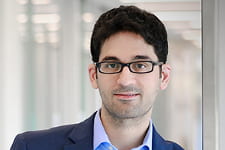Tumors are composed of rapidly multiplying cancer cells. Understanding which biochemical processes fuel their relentless growth can provide hints at therapeutic targets.
Researchers from Washington University in St. Louis have developed a technology to study tumor growth in another dimension — literally. The scientists established a new method to watch what nutrients are used at which rates spatially throughout a tissue.
By using this multidimensional imaging approach, they identified pathways whose activities are uniquely elevated in brain cancer, offering clues for potential treatment strategies. The study was published May 19 in Nature Communications.
“We figured out how to infer the rate of biochemical reactions directly from discrete regions of tissue,” said Gary Patti, PhD, the Michael and Tana Powell Professor of Chemistry in Arts & Sciences and a professor of medicine at the School of Medicine. Patti, who is also a research member of the Siteman Cancer Center at Barnes-Jewish Hospital and Washington University School of Medicine, is senior author of the new study.

Human biology is intrinsically 3D in nature. The emerging field of spatial biology aims to capture this geometry by imaging the locations of genes, proteins and metabolites. The approach reported by Patti and colleagues extends spatial profiling to fluxes, the rates at which molecules are transformed inside of cells.
“Other technologies provide what is essentially a roadmap of biochemistry. Our goal was to add in a measurement of how fast traffic is flowing on the different roads.” said Patti.
By Patti’s analogy, the new method is akin to the feature in Google Maps that uses green and red colors to indicate the density of cars on a given street.
Using a mouse model of glioblastoma, a deadly form of brain cancer in humans, the researchers created a high-resolution map of the “tumor ecosystem.” This allowed them to tell which molecules were located in what parts of the brain and how quickly those molecules were turning into other things.
The results shed light on how cancer cells in a brain tumor get lipids, a basic component of fat.